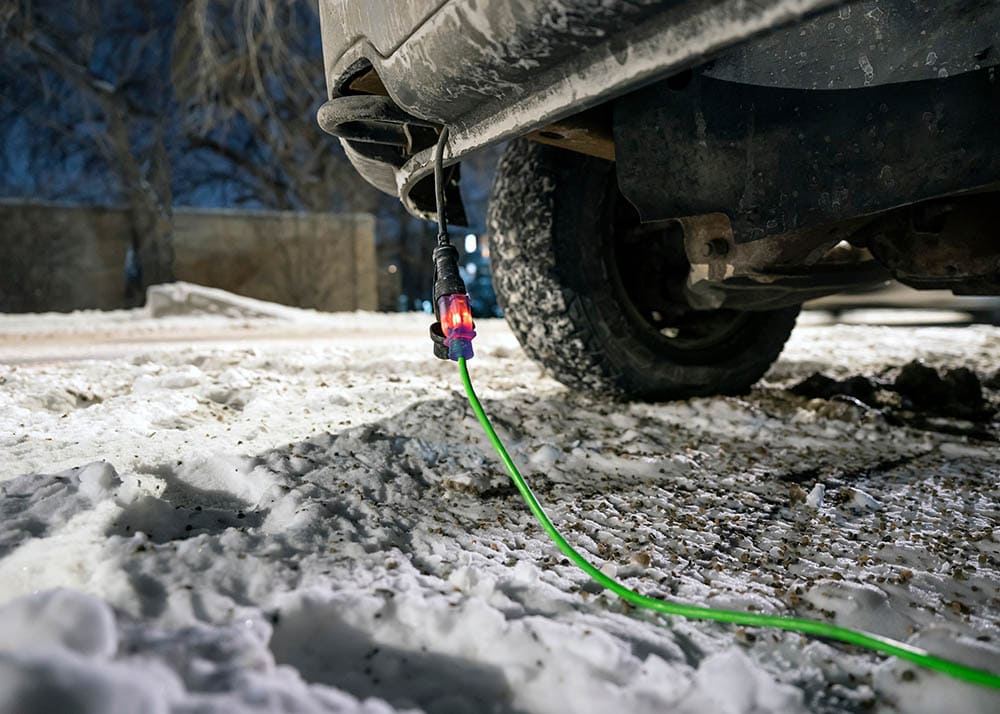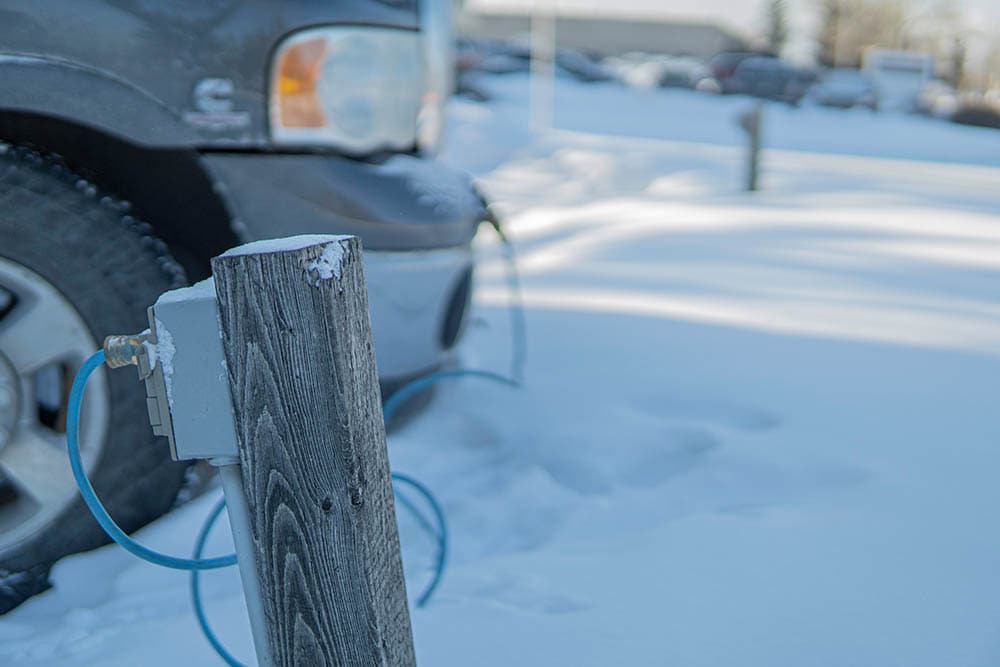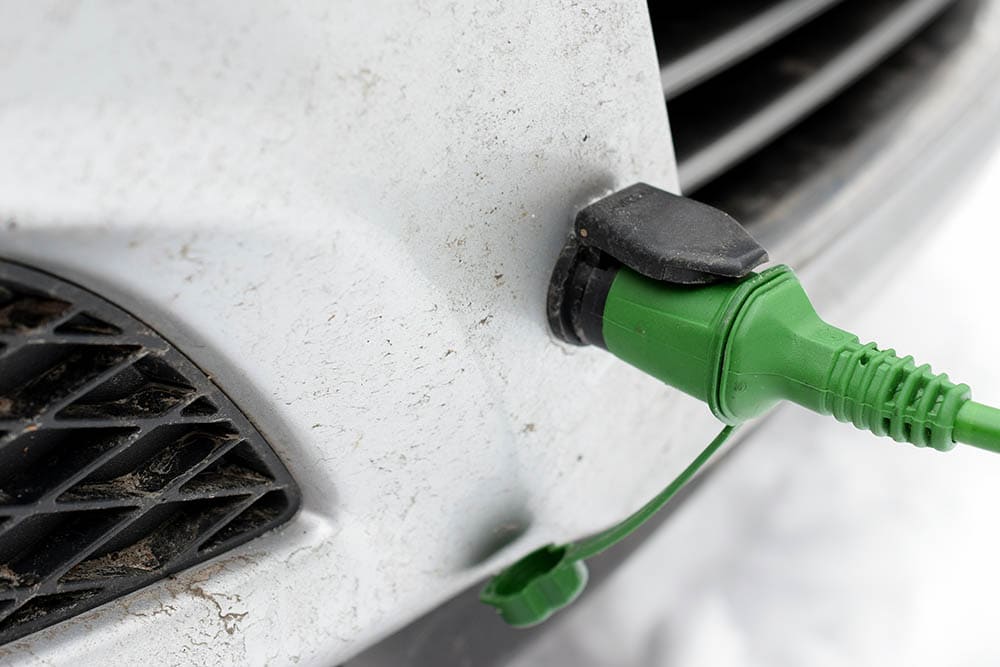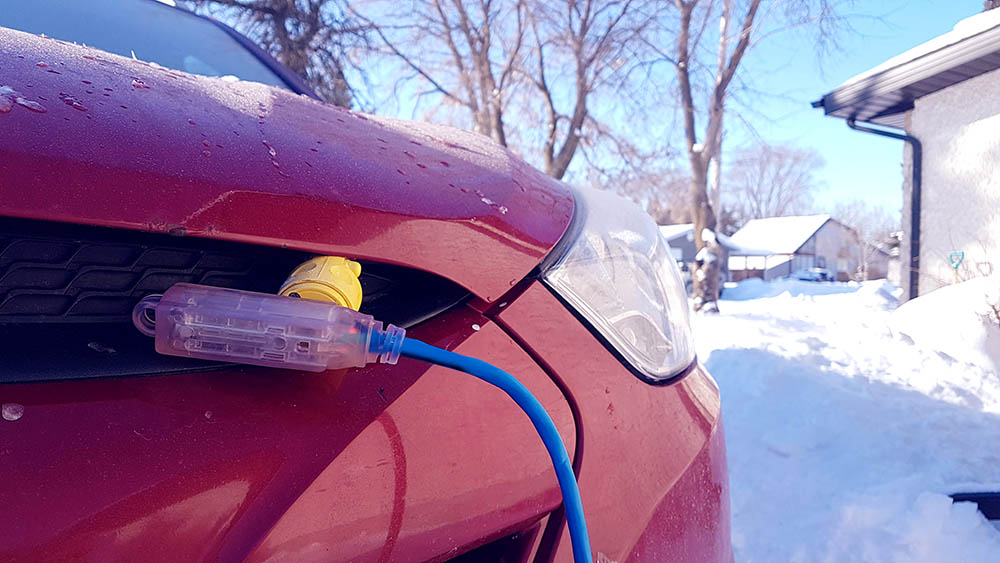What Is an Engine Block Heater? Types, Facts & FAQ
-
Pete Ortiz
- Last updated:

If you are preparing for winter’s chilly temperatures, you have probably come across an engine block heater. They often come in handy for you, your generator, and your car. But before you get this machine, do you really know what an engine block heater is and its importance?
An engine block heater is an item that warms up an engine and its fluids before starting a car. It is primarily used in freezing temperatures to reduce the chances of damage from idle time and cold starts. The engine block heater quickly achieves the proper operating temperature for your motor oil before starting your car.
In this post, you’ll learn the definition of an engine block heater, its purpose, its advantages and disadvantages, plus the different types. You will also know when you should plug it in. Let us get started.
What Is an Engine Block Heater?
An engine block heater is an electrical tool that heats a vehicle’s engine and its fluids (motor oil) before starting. After all, it is crucial to warm your car during the cold seasons and when the vehicle is not in use.
The word block in “block heater” refers to the lower area of the engine. Due to gravity, oil gathers in the pan at the bottom of the block when you turn the engine off. The block is a popular term used, even though not all engine block heaters go into the block.
Remember that your engine oil becomes viscous due to the freezing temperatures, forcing parts to grind against each other. So it would be best not to leave your car idling.
Before starting the engine, you should warm the oil to improve fuel efficiency and lower pollutants using an engine block heater. Doing this will also warm the temperature-controlling coolant in your car. Thanks to the coolant’s ability to warm the cabin heat, using a heater will shorten the time it takes for your car’s interior to warm up.

What Is the Purpose of an Engine Block Heater?
The sole purpose of an engine block heater is to preheat an engine (its block and internal fluids) before it starts. It is perfect for use in chilly areas because it starts your car quickly while using less energy.
Once the engine block reaches a higher temperature, it makes the oil thin enough to flow through the engine block. Even though you can primarily use block heaters in car engines, you will also find them in aircraft engines and generators.
Apart from allowing your car to start, thanks to achieving its ideal temperature sooner, an engine block heater will let you put your automobile under full capacity early without straining the engine.
 What Are the Different Types of Engine Block Heaters?
What Are the Different Types of Engine Block Heaters?
There are various types of engine block heaters you can choose from to suit your needs. There are internal heaters used inside the engine and exterior ones used outside the block. While some types heat the block, others directly heat the fluids. You must first realize how they operate before deciding which type you need.
Built-in Heater
This type of engine block heater usually comes with an engine. Most manufacturers add built-in heaters to warm the machine when it is freezing. However, many built-in heaters, particularly vehicle heaters, wear out quickly primarily because of mechanical faults.
Frost Plug Heater
The frost plug heater substitutes the existing core plug, otherwise known as the freeze plug. It uses a component sitting in the coolant to heat the coolant inside the engine. Your car’s service manual should guide you to the plug.
- Challenging to set up. For instance, before installing a frost plug, the technician sometimes has to remove the engine block. After all, you will find these block heaters in the engine block’s plug area.
- They are ineffective because they heat the coolant instead of directly heating the engine or the engine oil.

Inline Coolant Heater
Inline coolant heaters, also known as radiator heaters, are more efficient and convenient to install. Since they warm the engine’s cooling system, they function better than block heaters. They heat the entire engine from the outside and protect against cold starts.
Before setting up a radiator engine system, you must empty the engine’s coolant. Then cut the lower radiator hose and plug in the heater hose. Fill the drained coolant and cover it with the proper hose sealants.
The crucial part of most radiator engine warmers is a water pump. Ensure you read the manufacturer’s instructions before using it.
Non-circulating Inline Heater
Also known as the non-circulating heater, you can mount the inline heater to a coolant pipe. However, the heat will circulate within that region only.
Circulating Inline Heater
For circulating inline heaters to function, you must hook them into a coolant hose, which will need some work. Heat then spreads throughout the system using a circulating model, which uses the current pump to achieve this.
Bolt-on External Heater
As the name suggests, the bolt-on external heater is plugged outside the engine’s block, heating the engine block from the exterior inwards. They quickly heat the machine but are challenging to install. So before choosing an available bolt-on external heater, you should ensure it fits right into the engine.
Oil Pan Heater
You can use an oil pan heater to heat the oil pan or another engine area. It is a heating pad of automotive quality that maintains the viscosity of the engine oil. As a result, they lessen friction, which could contribute to motor engine wear and tear.
The pad (often fastened with magnets or bolts) heats the oil pan and its contents. Oil pan heaters are best suited for large engines with extensive oil systems. Installing them is daunting because you must first remove the engine’s oil pan. So to be on the safe side, you will have to consult an engineering expert.

Dipstick Heater
Instead of the dipstick, you can use a lengthy heating device known as a dipstick heater to warm the oil. And since the dipstick is where you mount it, that is how it got its name. You should ensure that you position them near the dipstick’s engine. They warm the engine’s oil to enhance its performance.
Dipstick RV heaters maintain the warmness of the engine to avoid cold starts. They guard against engine freeze and other weather-related irregularities. Although mounting them is easy, it would be best if you only fixed them near the oil dipstick to ensure it heats the motor oil.
Engine Heating Blanket
Commonly known as an engine warming blanket, this engine block heater provides even heating throughout the engine block. Depending on the make, you should position it on top, on the side of the engine, or tie it below the hood for it to work.
To function effectively, you must ensure that the heater does not rest on the car’s electrical parts.
You can quickly install them on your engine and remove them when you no longer need them. When it’s cold, engine warming blankets use a powerful electric motor to maintain heat throughout the engine.
How Do I Use an Engine Block Heater?
Using an engine heater largely depends on the outside’s temperature. You should plug in your heater overnight if it is too cold outside.
While some heaters, like dipstick heaters, are simple to install by yourself, others, like inline heaters, require expert installation. Before you DIY, check your heater’s type instructions and weigh that against how comfortable it will be for you.
After installing your engine block heater, plug the heater into an extension cord connected to a standard house plug.
You don’t need to use a heater every cold day. But you are encouraged to use these heaters when temperatures drop below 5 degrees Fahrenheit. In less severe climates, you can use a remote starter to heat the engine.

Advantages of Using an Engine Block Heater
There are numerous perks of using an engine block heater, including:
Less Pollution
Most of the time, when you think about your engine’s performance, you tie it to your vehicle’s operation. And often, the engine’s performance connection to the environment is neglected.
Engine block heaters are not toxic to the environment because they emit fewer pollutants. Engine block heaters warm the motor oil to increase heat circulation, causing the engine oil to evaporate. The more the vaporization, the fewer contaminants in the air.
Effective for the Engine
With an engine block heater, your car’s lifespan increases while the risk of engine damage decreases. Engine block warmers make your fuel less thick and smudgy during cold weather. When it’s freezing, starting your engine is complicated and deteriorates its performance.
Because of this, the engine will have to work harder and not run smoothly immediately. Before it can operate optimally and start running, the engine block heater will warm the engine oils to reach their ideal temperature.
Easy on the Heater
Your car’s engine determines how well the heater in your car operates. Engine block heaters distribute heat in your car, keeping the vehicle and the heater warm. By the time you turn on your vehicle’s key, the engine block heater has worked on the engine and thus will speed up in warming your car and the heater.
Disadvantages of an Engine Block Heater
Engine block warmers are limited in what they can do and how long they can operate.
- Some engine block heaters are difficult to install and may need professional assistance.
- They have less impact on the latest car models unless the temperatures fall below 104 degrees Fahrenheit.
- You should not plug them in for more than 4 hours since the extra hours are useless for the engine.
When Should You Buy One?
It is advisable to buy an engine block heater if you live in an area where temperatures are 10 degrees Fahrenheit or lower. However, if you reside where intense freezes are unusual, you most likely don’t require this gadget.
 Frequently Asked Questions
Frequently Asked Questions
Can Idle Warm Ups Replace Engine Block Heaters?
No. An engine block warmer is still necessary even if you start your automobile and let it run for 10 to 15 minutes. Before you start your car, the engine block heater will have already done its work, allowing you to start your car quickly. Plus, it is generally not safe to leave your vehicle idling too long.
How Long Should I Run My Engine Block Heater?
It is not mandatory to leave your engine block heater plugged in all night. Once the engine warms up to its ideal temperature, the extra heat will be wasted on the chilly air, thus wasting electricity (especially if the weather is less severe).
It’s best to switch on your engine block heater 3–4 hours before driving the car in the frosty weather. You can even use a timer to automatically start the heater during your early morning rides.
- Those in excessively cold areas. Engine block heaters are ideal for people living in Canada and northern parts of America because of their regular harsh frost. Using block heaters for cars in warm areas is a waste of money.
- Drag racers. If you do not use your car daily, resulting in it needing more heat, then engine block heaters are perfect for you. Drag racers often use them for the convenience of leaving their cars parked in between races.
- If you own a diesel-engine vehicle. They will come in handy for vehicles using diesel engines since they burn their fuel at higher temperatures than gasoline-powered vehicles. A diesel engine has to have a block winter running even in milder winter temperatures.
- If your automobile survives on non-synthetic oil. A heater is also significantly useful for non-synthetic oil-using vehicles.
In Conclusion
If you live in a harsh cold climate, please do not hesitate to get yourself an engine block heater. They are essential for the longevity of your car while warming you up for the cold rides. Now that you understand what it is, its purpose, and its functions, plus the various types, you can bring one home confidently.
If you are a DIY enthusiast, you can even install one with the help of this guide and your gadget’s manual instructions. Also, feel free to call in an expert if you want to set up the more challenging engine block heater types successfully.
Featured Image Credit: Brett Holmes, Shutterstock
Contents




